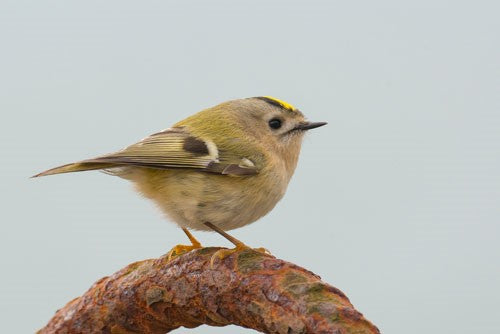
Goldcrest: Identification, Habitat, and Feeding Guide
Share
The Goldcrest (Regulus regulus) is a very small passerine bird; they are a dull greyish-green bird with a pale belly and a black and yellow stripe on their heads, which has an orange centre on males. Their thin beak is ideally suited for picking insects out from between pine needles.
The best places to find the Goldcrest is in coniferous woodland or parks with large mature trees. As it is the UK’s tiniest bird, they can be hard to spot due not only to their size but also the conspicuous and indistinct way in which they climb around trees.
The best way to locate a Goldcrest is to listen to its song, especially when it is part of a group. The collective, high-pitched shrill, a type of “zi-zi-zi”, which is very quiet from a single bird, can help you find them.
They begin their breeding process during late April and the Goldcrest makes a beautiful nest from moss lined with feathers, all held together by spiders' webs, suspended from a conifer branch.
Their diet consists mainly of insects and spiders and being a very active bird they will flit from branch to branch in search of them. The trees they favour the most are spruce, pine and fir.
The Goldcrest will happily visit gardens with trees but they’re an irregular visitor at feeding stations; however, in extremely cold winters, they may venture onto the bird table in search of a hearty meal and extra calories – if you see them, soft foods are ideal and they're fond of suet when it's hanging from a branch.
The Coco Fat feeder is a half coconut shell filled with seed-rich, high-energy suet; they are an enjoyable treat and a great way to attract a variety of wild birds into your garden. Simply hang them from a branch, feeding station or any other place that is suitable in your garden and watch them flock.

Written by Tina Jakes
